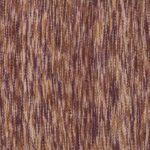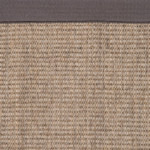Jute vs. Sisal
In design, a common term is to “start from the ground up” meaning that when decorating a room, designers first look at the floor and floor coverings before picking paint colors and accent pieces. Although easy for designers, for the non-design savvy, picking a rug or remodeling the floor of a room can be an extremely daunting task. Where do you even start and how do you even pick a rug that works? Here we have compared two of our favorite, inexpensive, natural fiber rugs to give you a better understanding of just some of your options.
 Jute Rugs – The softest of the natural fibers, jute is grown primarily in Bangladesh and India and is used in a variety of industries and common household materials. Known as the “golden fiber,” jute itself is not only used in rugs and floor coverings but also in the automobile, aeronautical and coffee industries just to name a few. Burlap is even made from jute fibers. The fiber itself is extracted from the stem and outer skin of the green jute plant prior to being woven into products we recognize today. In the home furnishings industry, jute rugs are extremely popular and for good reason. Although typically seen in neutral hues of brown and tan, jute rugs can come in a variety of shapes, sizes, colors and textures including reds and greens, patterned geometric pieces and oversized circular and rectangular braided shapes. Due to their abundant variety in design, these rugs can be used beautifully in nearly every room of the house. With almost cotton-like softness underfoot, jute rugs add in a refined and elegant natural appearance to any room. They are both pet-friendly and easy to clean, most often requiring a quick sweep with the vacuum. While we love jute for its versatileness, one of the biggest cons of this rug type is that it is not as resilient to daily wear and tear as other natural fiber rug options. Due to its softness, jute rugs should be used primarily in lower traffic areas like bedrooms and formal living rooms. They also are more absorbent than other rug options thus can stain easier and should not be used in humid rooms or rooms prone to spills like the kitchen and dining room. Similarly, because of jute being a natural fiber, rugs should not be steam cleaned as it may ruin the rug’s integrity and natural colors and can lead to mildew and mold.
Jute Rugs – The softest of the natural fibers, jute is grown primarily in Bangladesh and India and is used in a variety of industries and common household materials. Known as the “golden fiber,” jute itself is not only used in rugs and floor coverings but also in the automobile, aeronautical and coffee industries just to name a few. Burlap is even made from jute fibers. The fiber itself is extracted from the stem and outer skin of the green jute plant prior to being woven into products we recognize today. In the home furnishings industry, jute rugs are extremely popular and for good reason. Although typically seen in neutral hues of brown and tan, jute rugs can come in a variety of shapes, sizes, colors and textures including reds and greens, patterned geometric pieces and oversized circular and rectangular braided shapes. Due to their abundant variety in design, these rugs can be used beautifully in nearly every room of the house. With almost cotton-like softness underfoot, jute rugs add in a refined and elegant natural appearance to any room. They are both pet-friendly and easy to clean, most often requiring a quick sweep with the vacuum. While we love jute for its versatileness, one of the biggest cons of this rug type is that it is not as resilient to daily wear and tear as other natural fiber rug options. Due to its softness, jute rugs should be used primarily in lower traffic areas like bedrooms and formal living rooms. They also are more absorbent than other rug options thus can stain easier and should not be used in humid rooms or rooms prone to spills like the kitchen and dining room. Similarly, because of jute being a natural fiber, rugs should not be steam cleaned as it may ruin the rug’s integrity and natural colors and can lead to mildew and mold.
 Sisal Rugs – Made of one of the toughest natural fibers, sisal is grown and harvested primarily in Brazil, Mexico and many countries in Africa. The fibers are extracted from the leaves of the agave plant before being woven into a yarn that in turn is made into a variety of things we use such as twine and rope, buffers in spa products, mattresses, cloth and specialty paper.As one of the more durable options, sisal rugs are recommended to be used in higher traffic areas such as entry ways and hallways. Often a rich velvety white color, sisal rugs work well in brighter rooms with more sunlight and compliment nearly any accent color in a space. Like jute rugs, they add a more natural or organic look to a room design. Similarly, sisal rugs are extremely absorbent and will not last in humid rooms or rooms where stains can occur as spot cleaning is not recommended. In addition to being a more durable option, another pro of these types of rugs are that they produce and attract less dust than their jute counterpart making them easier to clean and maintain in the long run. On the other hand, one of the biggest draw backs of sisal is that they are far more course than jute rugs and are not as feet friendly.
Sisal Rugs – Made of one of the toughest natural fibers, sisal is grown and harvested primarily in Brazil, Mexico and many countries in Africa. The fibers are extracted from the leaves of the agave plant before being woven into a yarn that in turn is made into a variety of things we use such as twine and rope, buffers in spa products, mattresses, cloth and specialty paper.As one of the more durable options, sisal rugs are recommended to be used in higher traffic areas such as entry ways and hallways. Often a rich velvety white color, sisal rugs work well in brighter rooms with more sunlight and compliment nearly any accent color in a space. Like jute rugs, they add a more natural or organic look to a room design. Similarly, sisal rugs are extremely absorbent and will not last in humid rooms or rooms where stains can occur as spot cleaning is not recommended. In addition to being a more durable option, another pro of these types of rugs are that they produce and attract less dust than their jute counterpart making them easier to clean and maintain in the long run. On the other hand, one of the biggest draw backs of sisal is that they are far more course than jute rugs and are not as feet friendly.
Photos courtesy of Jaipur Living and Loloi